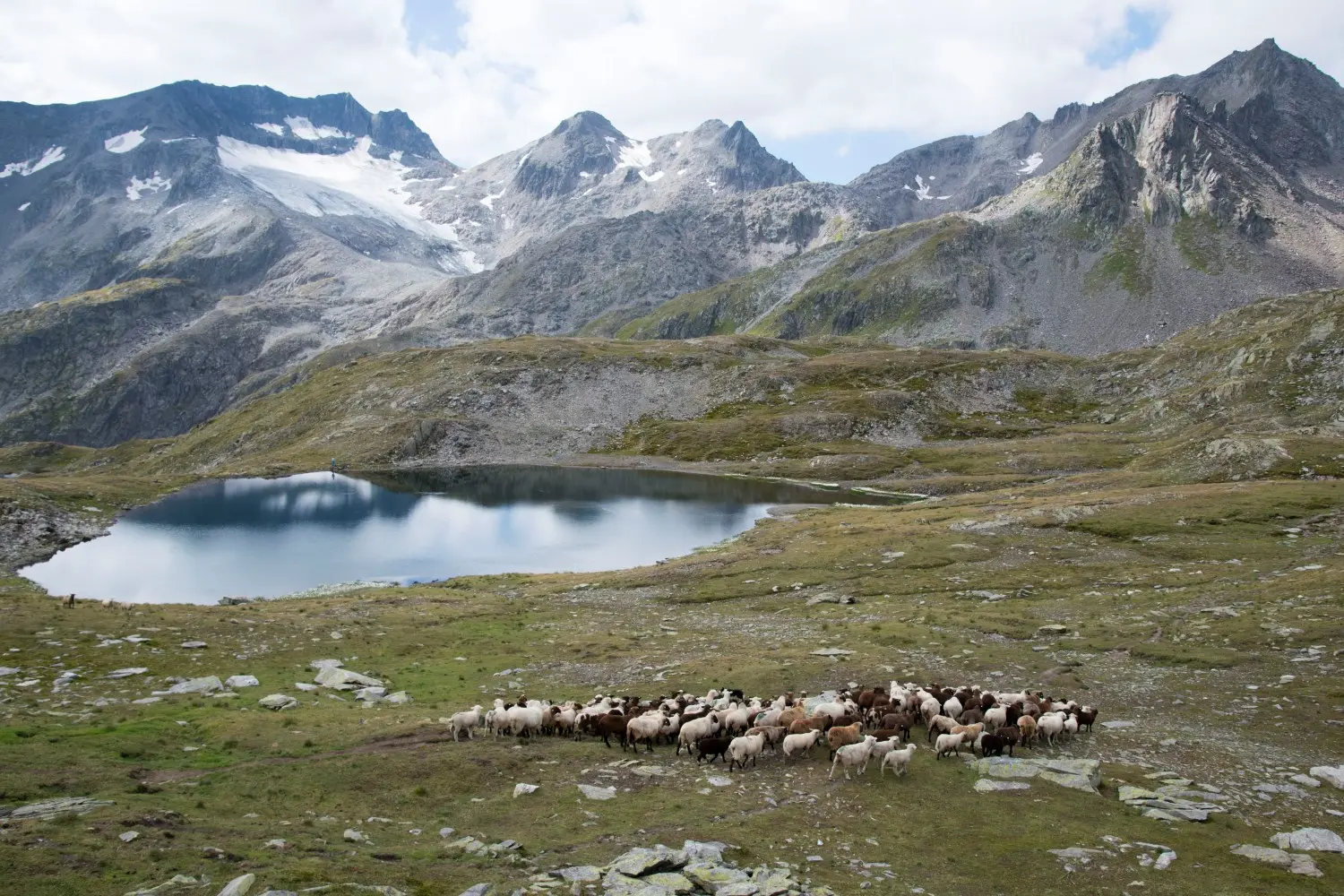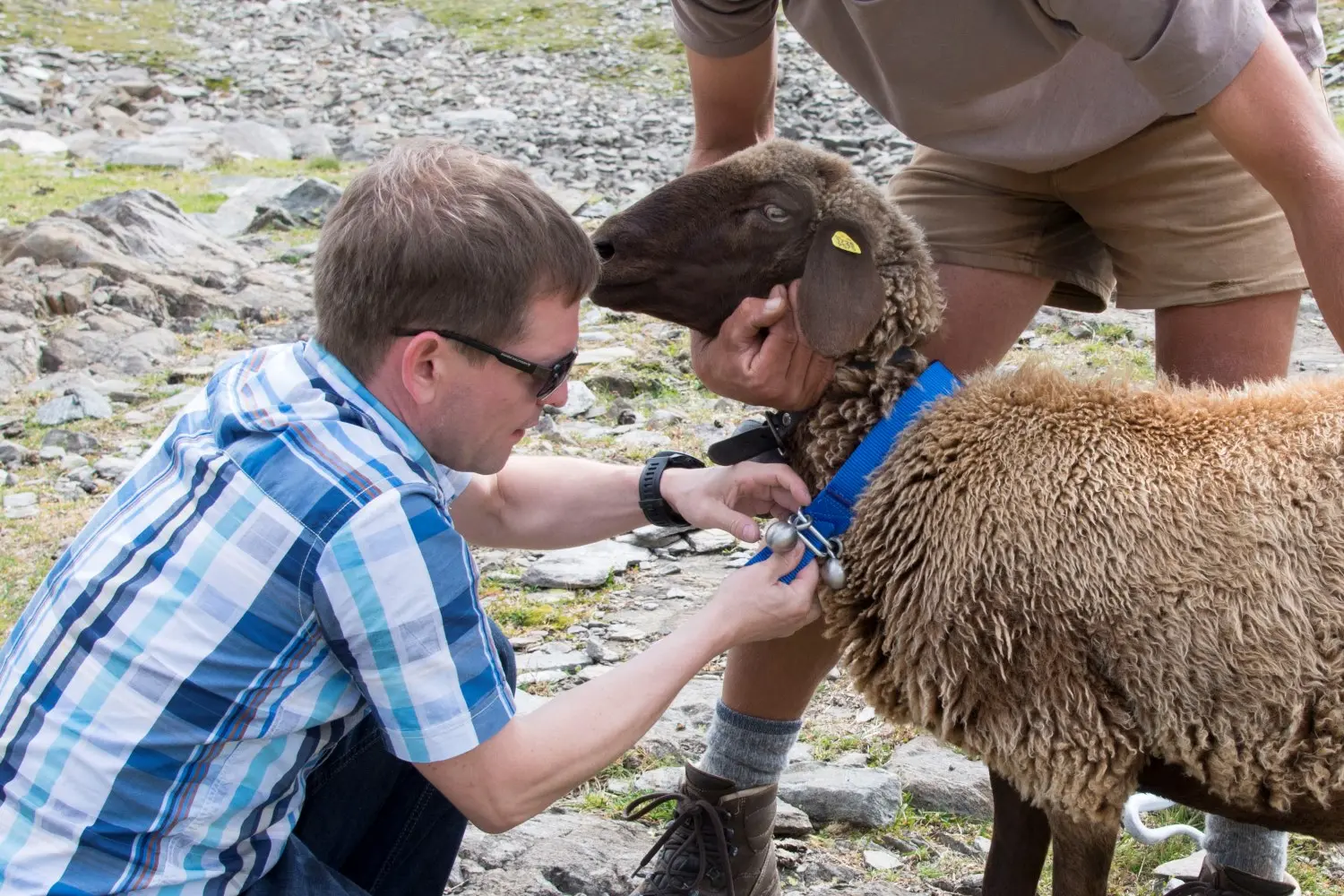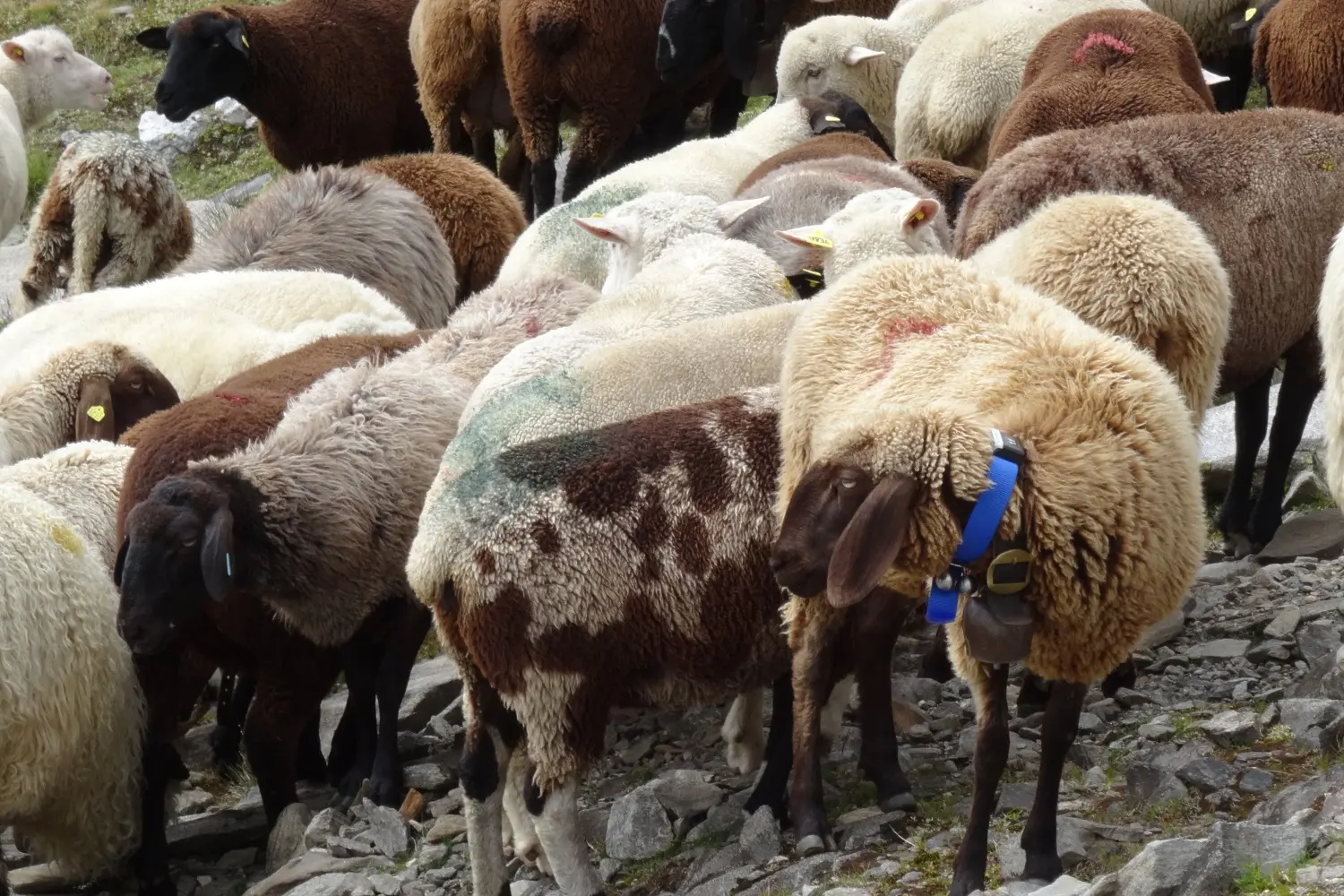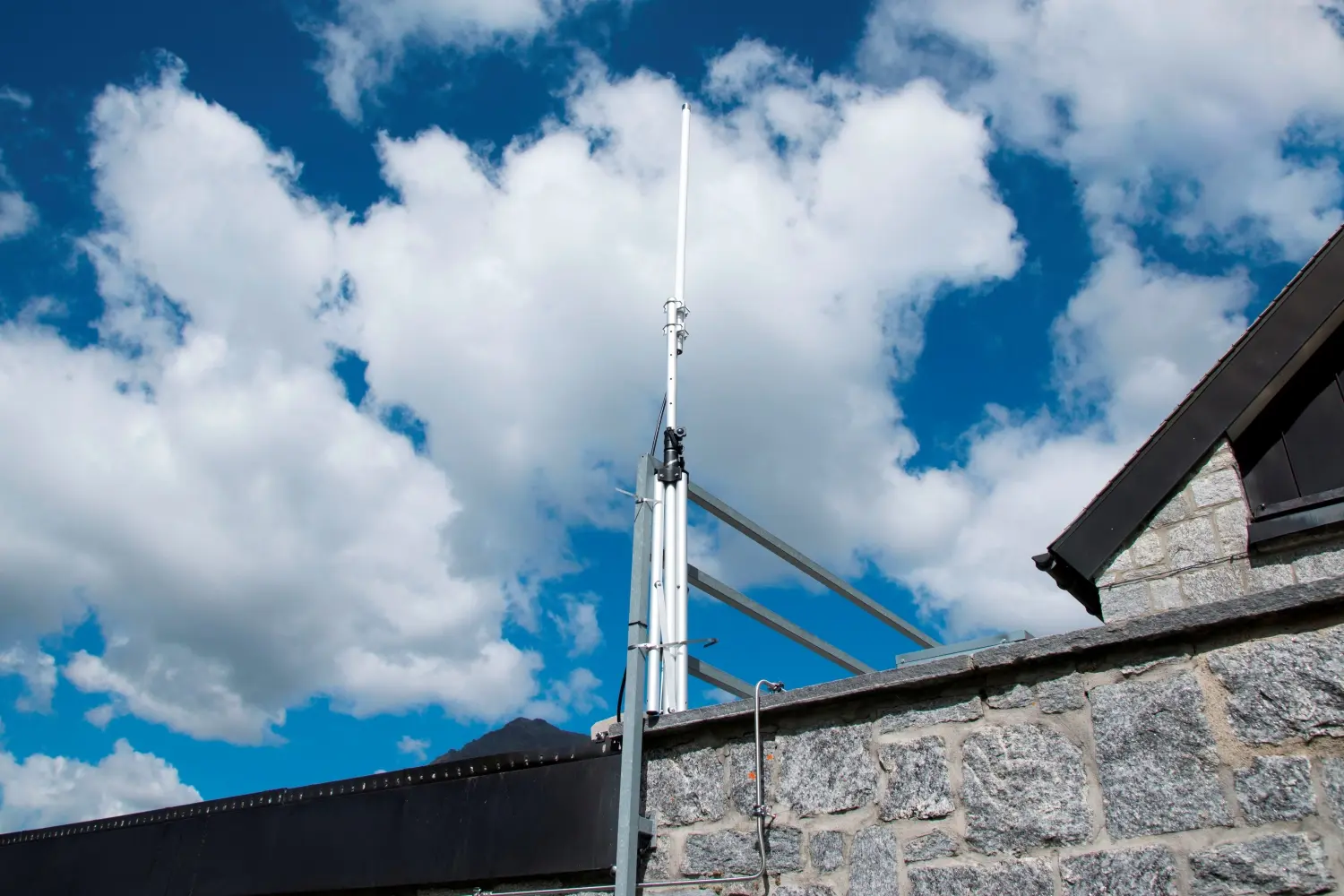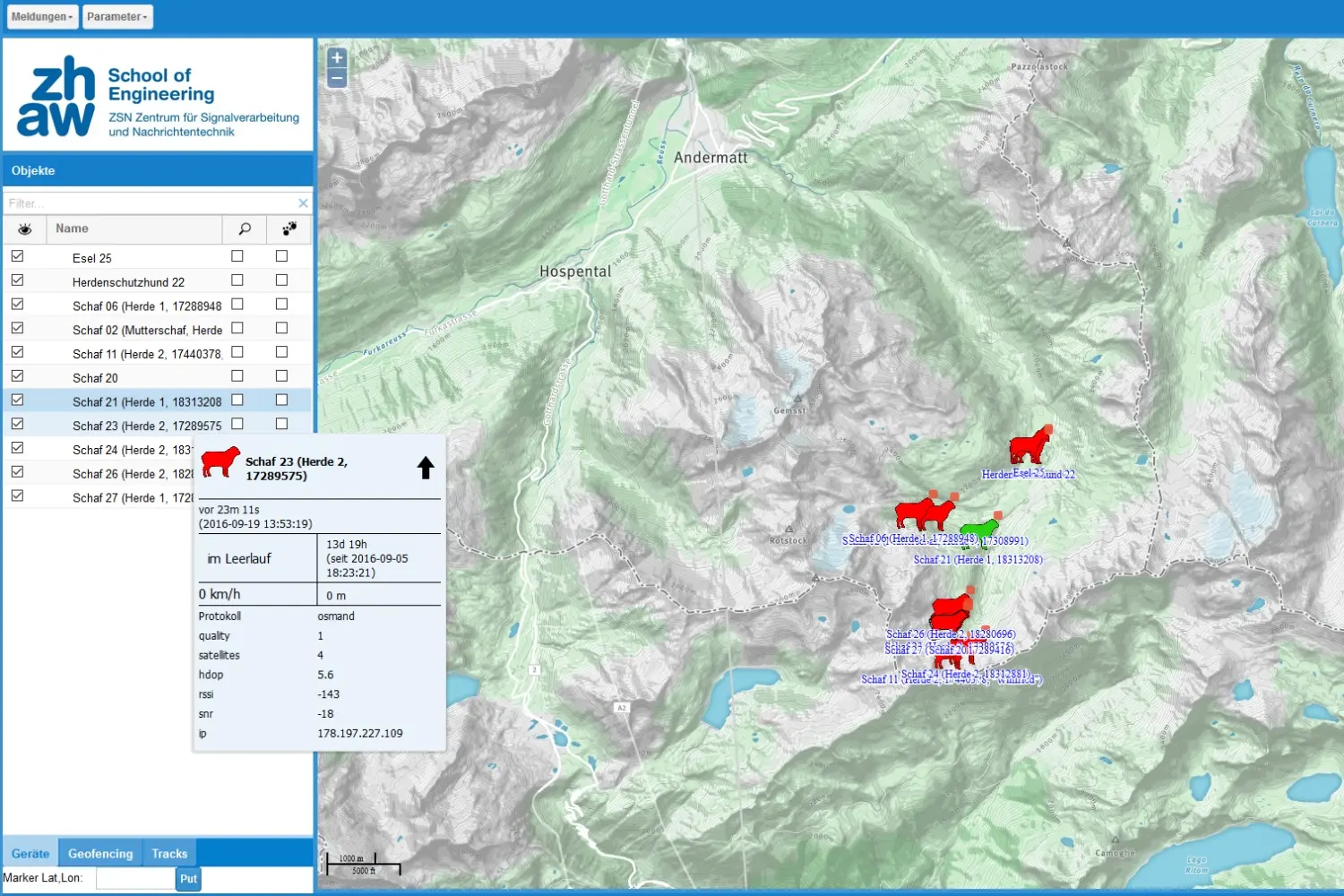LoRa Alptracker
Tracking livestock. Digital age now dawning for shepherds and farmers
During a field test carried out by the ZHAW School of Engineering, a flock of sheep was equipped with a tracking system. A new type of radio technology, originally developed for the internet of things, transmits the data. The project is now receiving financial support from the CTI.
A flock of sheep can often number several hundred animals. When they are grazing on alpine pastures in the summer, these flocks are generally free to roam as they please. For the shepherds, it is not always easy to keep a flock together, and it is not uncommon for them to spend hours looking for stray sheep. In future, a digital monitoring system will be able to help shepherds locate their sheep exactly. To date, however, no viable livestock-tracking system has been brought to market. The research prototypes developed so far use GPS and the mobile telephony network. “These solutions use too much power, which means that at short transmission intervals their batteries will not last more than a few weeks at most. Their hardware and the fact that they depend on a mobile-phone subscription also make them relatively expensive,” explains Daniel Früh of the Institute for Signal Processing and Wireless Communications (ISC) at the ZHAW School of Engineering. “Furthermore, the network coverage provided by mobile-phone operators in the alpine regions is often inadequate.”
"LoRa makes it possible to transmit data over long distances, while also minimising energy consumption when the data volumes are modest."
Daniel Früh, Institute of Signal Processing and Wireless Communications (ISC)
New internet-of-things wireless technology
In a pilot project carried out with the industrial partner Tecsag, Daniel Früh began by placing GPS trackers on a flock of sheep grazing on alpine pasture near Andermatt. A specially designed wireless protocol is used to transmit the data. In this initial test, eight sheep, one donkey and one sheepdog are now wearing transmitter collars around their necks. The transmitters send data to a low-cost receiver station specially developed for the project. The set up uses LoRa (LongRange), a new wireless technology developed for the internet of things. “LoRa makes it possible to transmit data over long distances, while also minimising energy consumption when the data volumes are modest,” explains Daniel Früh. “The data are sent to the receiver station we have installed. From there, they go via the internet to our server.” This approach makes it possible to transmit data at much lower cost and with much lower energy use than could be achieved with the wireless telephony network.
Federal funding for project
Thanks to this system, shepherds can now monitor their flocks online. From afar, they can see where their flock and dogs are and keep track of their movements. If one or more sheep move too far away from their allotted pasture, the system will set off an alarm. This automated monitoring of sheep flocks is designed not only to optimise control of the livestock but also to provide the shepherds with better protection against wild animals. “We also plan to integrate an accelerometer into the tracker, so that unusual types of movement can be detected and an alarm set off where necessary,” says Daniel Früh. “Data on how the animals are moving also give an indication of their state of health.” Agroscope, the Swiss Confederation’s centre of excellence for agriculture research, is now helping to develop the system further. Innosuisse (former CTI) also sees the potential of this technology and is providing financial support to the project.
Scope for additional applications
This solution paves the way for a range of new applications, particularly in agriculture, which had not hitherto been practical due to the costs involved and the fact that the batteries required had a limited lifespan and were too heavy. Besides sheep, the system could also be used to monitor dairy or beef cattle grazing on extensive lowland or alpine pastures. Furthermore, the low-cost, energy-efficient data-transmission technology could also be used with other types of sensors. Vegetation and environmental sensors, for example, could be used in new applications for managing pasture land.
TV report on Tele 1
At a glance
Participating institutes and centres:
Project partner:
Financing: Innosuisse (former CTI)
Project duration: 2015-2017
